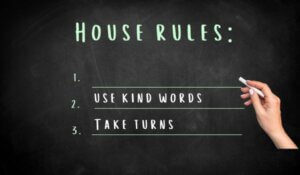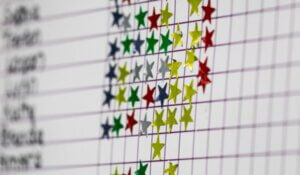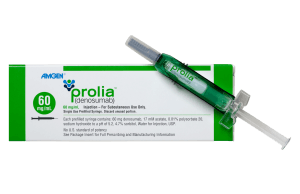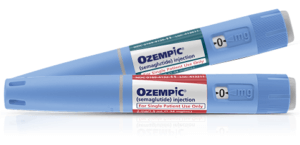 When a child is diagnosed with Attention-deficit/Hyperactivity Disorder (ADHD), it can affect the whole family. Parents often feel more stressed and frustrated when dealing with the challenges of bringing up a child with ADHD, as many of the usual parenting methods don’t work well for managing the behaviors linked to ADHD.
When a child is diagnosed with Attention-deficit/Hyperactivity Disorder (ADHD), it can affect the whole family. Parents often feel more stressed and frustrated when dealing with the challenges of bringing up a child with ADHD, as many of the usual parenting methods don’t work well for managing the behaviors linked to ADHD.
From my experience teaching kids with ADHD in schools, creating structure, rules, and routines may help children with ADHD do better in their daily lives. They can thrive in environments that are organized and predictable. Let’s look at some rules and routines that children with ADHD tend to respond well to and how to get them set up in the home.
Suggestions to set behavioral rules
Something that is often suggested for kids with ADHD is to set clear and specific house rules. Parents can try making a list of the key rules they want their child to follow and explain them in detail. For example, telling a child to “be good” or “be respectful” can be too vague and open to interpretation. Instead, try breaking these ideas down into specific actions, like “use kind words” or “wait your turn” to help the child understand exactly what is expected.
Try setting clear morning and evening routines, such as specific times for homework, dinner, and bedtime. If there’s going to be a change in the schedule, it’s important to give plenty of warning. This makes transitions easier and helps prevent behavior problems.
Keep it simple. Kids with ADHD often have trouble focusing. Too much talking can overwhelm them, so less is more.
In my teaching experience, repetition is essential for kids with ADHD. Using scaffolding techniques and verbal reminders helps children stick to the rules. Scaffolding techniques are ways to help someone learn something new by breaking it down into smaller, easier steps. Think of it like building a structure. Support is provided as they learn, and once they get the hang of it, it is gradually reduced so they can do it on their own.

However, having too many rules may be overwhelming. That’s why it may be best to focus on just a few main rules that address behavior. Some examples may include
- Be kind. This includes speaking and acting kindly. It applies to things like talking back, arguing, sharing, and acting aggressively.
- Communicate with words. Whether they want attention, feel upset, or are angry, a rule that those feelings need to be spoken instead of grunting, yelling, or screaming may be useful. This approach can also help avoid physical actions, like hitting or pushing.
- Always try your best. Completing daily tasks like getting dressed or brushing teeth, and listening to authority figures outside the home, such as teachers or childcare workers, can be a challenge for children with ADHD. This rule is also meant to remind them that it’s okay if they don’t succeed at something, but it’s always important to try.
More tips for using rules
There is no one-size-fits-all approach to handling kids with ADHD, and tailoring the rules to the specifics and personality of the child is essential. Once the rules are clearly defined, it’s important to consistently refer to them whenever negative behavior needs to be corrected.
Try writing the rules down and displaying them on the wall for visual reinforcement. If they can’t read yet, create a list with pictures that represent each rule. This way, they’ll have both visual and verbal reminders to help them understand and follow the rules.
Keeping the household organized may help a child with ADHD learn how to stay organized themselves. Clutter can make it harder for them to focus, so every item should have a specific place. One way to help is by using labeled bins in their room, which can make it easier for them to find things and keep their space tidy.
House rules for the parent of an ADHD child
Successfully using these tips at home also depends on building a strong and supportive parenting team and a strong parent-child relationship based on mutual respect . In other words, parents have to follow the rules, too! And who knows, maybe the rules and structure will be helpful for the parent if they also have ADHD. Parents can strengthen their connection with their children by praising their efforts, rewarding positive behavior, showing empathy for their challenges, and setting aside time each week for special one-on-one activities.
FAQs
What is the “30 rule” for ADHD?
An ADHD expert says kids with ADHD are usually about 30% behind their peers in emotional development. This means their emotional maturity is about 30% lower than their actual age.
How well do kids with ADHD follow the rules?
Children with ADHD often struggle with listening, remembering instructions, following rules, and controlling impulses. However, there are effective discipline strategies that can make a difference.
Does ADHD get better with age?
According to the National Human Genome Research Institute, about 20–30% of people continue to have ADHD symptoms as they get older. However, around half of adults experience fewer symptoms over time. It’s not clear why some people outgrow their symptoms while others don’t.
What makes ADHD worse in kids?
Many things can worsen ADHD symptoms. Not getting enough exercise, eating unhealthy foods, not sleeping enough, and changes in hormones can all make ADHD harder to manage.
















